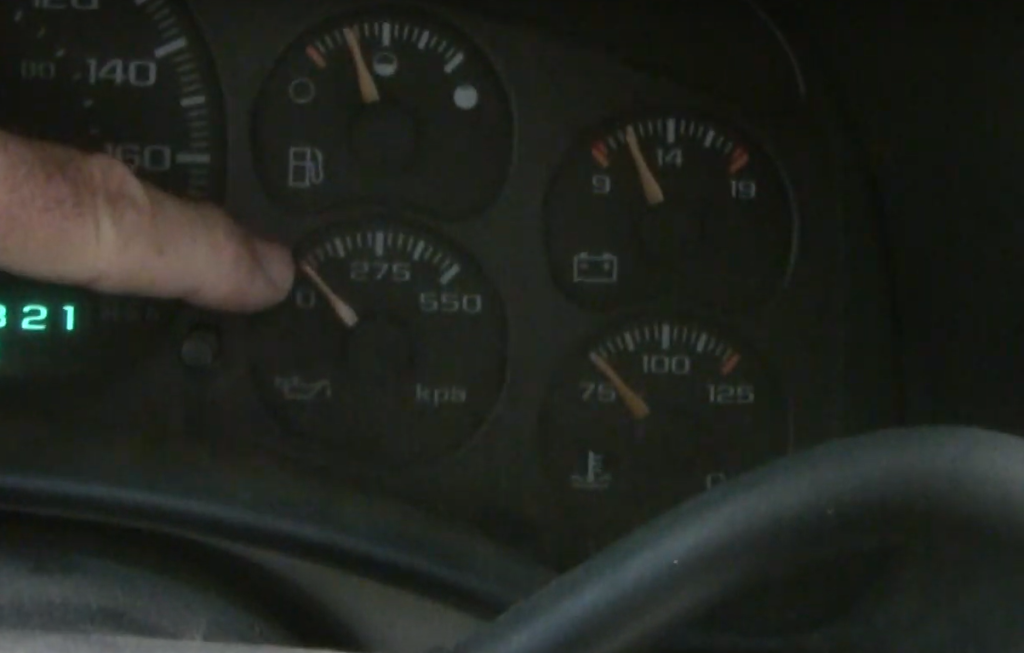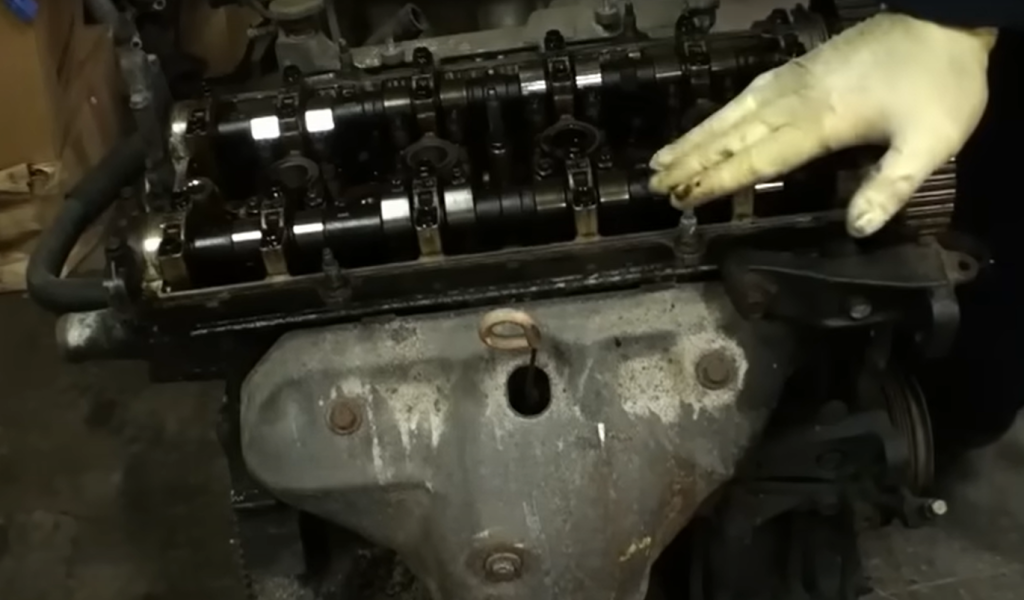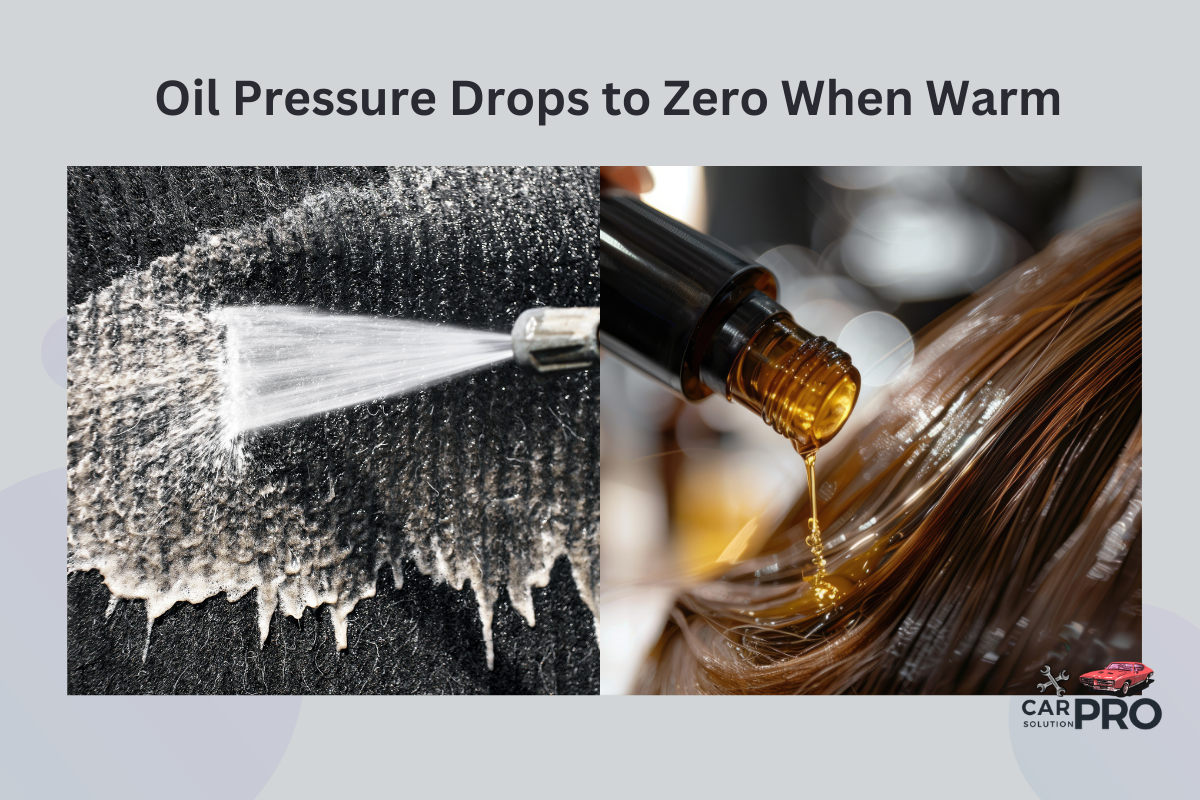Oil pressure dropping to zero when the engine is warm can be a serious issue for vehicle owners. This problem often starts with a slight decrease in pressure as the engine heats up, but can quickly worsen to a complete loss of pressure. The most common causes of oil pressure dropping to zero when warm include low oil levels, using the wrong oil viscosity, worn bearings, a faulty oil pump, or a clogged oil filter.
Drivers may notice warning lights on the dashboard or unusual engine noises when this occurs. It’s crucial to address the issue promptly, as running an engine without proper oil pressure can lead to severe damage. Regular maintenance and quick action when problems arise can help prevent costly repairs down the road.
Key Takeaways
- Low oil levels and incorrect viscosity can cause pressure drops
- Warning lights and engine noises may indicate oil pressure issues
- Prompt action is essential to prevent engine damage
Understanding Oil Pressure
Oil pressure is crucial for proper engine function. It ensures all moving parts are lubricated and protected from wear. Proper oil pressure depends on several factors, including oil viscosity and the engine’s mechanical components.
Fundamentals of Engine Lubrication
Engine lubrication keeps parts moving smoothly. Oil forms a thin film between metal surfaces to reduce friction. This prevents direct contact and minimizes wear.
The oil pump circulates oil throughout the engine. It pushes oil through passages to reach all critical components. These include:
- Crankshaft bearings
- Connecting rod bearings
- Camshaft bearings
- Valve train components
Proper lubrication helps control engine temperature. It carries heat away from hot spots. This protects parts from overheating and damage.
The Role of Oil Viscosity
Oil viscosity affects how well it flows and protects engine parts. Thinner oils flow more easily when cold. Thicker oils provide better protection at high temperatures.
Most engines use multi-grade oils that work well in both cold and hot conditions. For example, 5W-30 oil flows like a 5-weight oil when cold but thickens to a 30-weight when hot.
Choosing the right viscosity is important. Using oil that’s too thin can lead to metal-on-metal contact. Oil that’s too thick may not reach all parts of the engine quickly enough.
Temperature affects oil viscosity. As oil heats up, it becomes thinner. This can cause oil pressure to drop when the engine is warm.
Mechanics of Oil Pressure
Oil pressure results from the oil pump forcing oil through narrow passages. The resistance created as oil moves through these passages creates pressure.
Key factors affecting oil pressure include:
- Oil pump condition
- Oil viscosity
- Engine bearing clearances
- Oil filter condition
When an engine warms up, oil thins out and flows more easily. This can cause a slight drop in oil pressure. However, a significant drop or zero pressure indicates a problem.
Low oil levels can cause pressure to drop. The oil pump may suck in air, reducing its ability to create pressure. Worn engine bearings can also lead to pressure loss by allowing oil to escape too easily.
Symptoms of Low Oil Pressure When Warm

Low oil pressure when the engine is warm can cause serious problems. Drivers need to watch for key signs to avoid engine damage.
Warning Lights and Gauges
The first sign of low oil pressure is often the oil pressure warning light on the dashboard. This light typically looks like an oil can. It may flash or stay on when the engine gets hot.
Many cars also have an oil pressure gauge. This gauge shows the actual pressure in the system. When the engine warms up, a sudden drop in the gauge reading can signal trouble.
Some newer vehicles use a digital display. This may show a low oil pressure message or warning icon.
Engine Noise and Performance Issues
Low oil pressure can cause strange noises from the engine. A common sound is a loud ticking or knocking, especially when the car idles.
The engine may run rough or stall. This happens because parts aren’t getting enough lubrication. Acceleration might feel sluggish or uneven.
In severe cases, the engine may overheat. This occurs when there’s not enough oil to cool moving parts. The temperature gauge may rise quickly.
Drivers might notice a burning smell. This can mean oil is leaking onto hot engine parts. It’s important to stop driving if this occurs to prevent further damage.
Common Causes of Oil Pressure Drop
Oil pressure can drop to zero when an engine gets warm due to several issues. These problems range from worn-out parts to oil-related concerns. Let’s look at the main reasons behind this problem.
Worn Engine Components

As engines age, their parts wear down. This wear can cause oil pressure to drop. Bearings are a common culprit. When they wear out, oil flows too freely, reducing pressure.
Other parts like piston rings and valve seals can also wear out. This lets oil leak into places it shouldn’t go. The result is less oil in the system and lower pressure.
Worn oil passages in the engine block can also cause issues. They may not hold proper pressure as the engine warms up.
Regular check-ups can catch these problems early. Fixing worn parts can often solve oil pressure issues.
Oil Quality and Level Concerns
The oil itself plays a big role in maintaining proper pressure. Low oil levels are a common cause of pressure drops. Not enough oil means the system can’t build up the right pressure.
Oil quality matters too. Old, dirty oil doesn’t flow well. It can’t protect the engine properly. This leads to more wear and lower pressure.
Using the wrong type of oil can also cause problems. Oil that’s too thin won’t maintain pressure when hot.
Regular oil changes and level checks are key. They help keep the engine running smoothly and maintain proper pressure.
Faulty Oil Pump
The oil pump is the heart of the engine’s lubrication system. If it fails, oil pressure drops quickly. A defective oil pump can’t move oil effectively. This leads to low pressure, especially when the engine is warm.
Pump gears can wear down over time. This reduces their ability to create pressure. Internal leaks in the pump can also cause pressure loss.
Sometimes, the pump’s relief valve gets stuck open. This sends oil back to the pan instead of through the engine. The result is a big drop in pressure.
Regular maintenance can help catch pump issues early. Replacing a faulty pump can often fix oil pressure problems.
Clogged Oil Filter or Passages
Oil needs to flow freely to maintain pressure. Clogs in the system can stop this flow. A dirty oil filter is a common problem. It can restrict oil flow, causing pressure to drop.
Oil passages in the engine can also get clogged. This often happens due to sludge build-up. Sludge forms when oil breaks down over time.
Clogged passages prevent oil from reaching all parts of the engine. This causes pressure to drop, especially when the engine is warm.
Regular oil and filter changes help prevent clogs. If passages are already clogged, an engine flush might be needed.
Diagnostic Procedures
When oil pressure drops to zero as the engine warms up, it’s crucial to perform some key checks. These procedures help pinpoint the root cause and guide repairs.
Oil Pressure Test
An oil pressure test is the first step in diagnosing the issue. This test measures the actual oil pressure in the engine.
To perform the test:
- Attach a mechanical oil pressure gauge to the engine
- Start the engine and let it warm up
- Check the pressure at idle and higher RPMs
Normal oil pressure ranges from 25 to 65 psi when warm. If the gauge shows zero or very low pressure, it confirms a serious problem.
Some possible causes include:
- Faulty oil pressure sensor
- Clogged oil passages
- Worn engine bearings
- Failed oil pump
Engine Inspection
A thorough engine inspection can reveal many causes of low oil pressure. Start by checking the oil level and condition.
Look for:
- Low oil level
- Dirty or degraded oil
- Oil leaks
Next, examine the oil filter and pump. A clogged filter or failing pump can cause pressure loss.
Inspect engine bearings for excessive wear. Worn bearings increase oil clearances, reducing pressure.
Check the oil pan for sludge buildup. Sludge can block oil pickup, starving the engine of oil.
If these checks don’t reveal the issue, internal engine damage may be the culprit. This could require more extensive diagnosis by a professional mechanic.
Maintenance and Prevention Strategies
Regular maintenance is key to avoid oil pressure drops when the engine warms up. Changing oil at the right intervals helps prevent this issue.
Use the correct oil grade for your vehicle. Low oil levels can cause pressure drops, so check oil levels often.
Clean or replace the oil filter as needed. A clogged filter can restrict oil flow and lower pressure.
Keep an eye on oil pressure gauges. Early detection of pressure changes can prevent major problems.
Important maintenance tasks:
- Check for oil leaks regularly
- Inspect and replace worn engine bearings
- Clean oil passages to prevent blockages
- Monitor engine temperature
Damaged bearings can cause pressure drops. Replace them promptly if wear is detected.
Consider using oil additives designed to maintain viscosity at high temperatures. These can help stabilize pressure.
Have a mechanic check the oil pump if pressure issues persist. A faulty pump may need replacement.
Avoid overheating the engine, as extreme heat can thin oil and lower pressure. Address cooling system issues promptly.
By following these strategies, drivers can help maintain proper oil pressure and extend engine life.
Frequently Asked Questions
Oil pressure issues when an engine warms up can be confusing for drivers. These questions address common concerns about oil pressure changes related to engine temperature and operation.
What causes a drop in oil pressure as the engine reaches operating temperature?
As engines heat up, oil thins out and flows more easily. This can lead to lower pressure readings on the gauge. Worn engine bearings or a failing oil pump may also cause pressure drops in warm conditions.
Why might an oil pressure gauge fluctuate between zero and normal readings?
Fluctuating oil pressure readings often point to electrical issues. A faulty oil pressure sensor or loose wiring can cause erratic gauge behavior. In some cases, air bubbles in the oil or a clogged oil pickup tube may also lead to inconsistent pressure readings.
What are the common reasons for an oil pressure warning light to activate on a cold start?
Oil pressure warning lights on cold starts typically indicate low oil levels. A failing oil pump or a clogged oil filter can also trigger warnings. In rare cases, extreme cold weather may cause oil to thicken, temporarily activating the warning light until the engine warms up.
What could lead to oil pressure dropping to zero at idle in warm conditions?
Oil pressure dropping to zero at idle when warm often indicates serious issues. Severe engine wear, a completely failed oil pump, or extremely low oil levels can cause this problem. A blocked oil passage or a damaged oil pressure relief valve may also be responsible.
How does engine temperature affect oil pressure readings?
Engine temperature directly impacts oil viscosity. As engines warm up, oil becomes thinner and flows more easily. This natural thinning can cause oil pressure to decrease slightly as the engine reaches normal operating temperature.
Why does oil pressure sometimes drop after the engine has warmed up?
Oil pressure drops after warm-up can occur due to normal oil thinning. However, significant drops may indicate problems like worn engine bearings, a weak oil pump, or oil leaks. Using the wrong oil viscosity for the engine can also lead to pressure drops in warm conditions.


